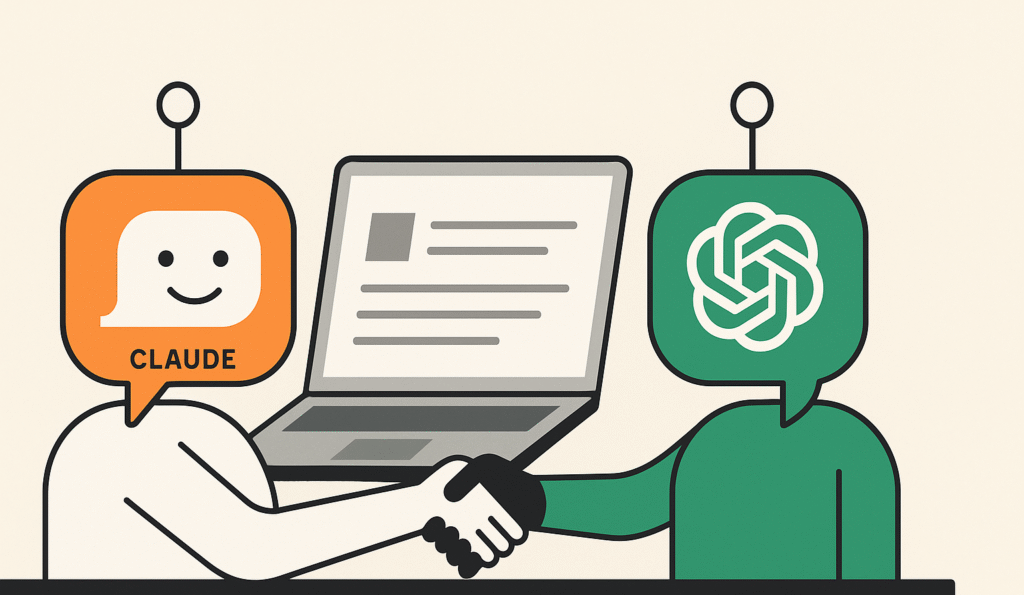OpenAI and Anthropic, two formidable players in the AI landscape, recently collaborated on an in-depth analysis of each other’s systems, a move that is particularly noteworthy in an industry often characterized by competitive secrecy. Their joint report, published on August 27, 2025, culminated in a comprehensive safety review involving rigorous internal checks. This unprecedented collaboration is a proactive effort to address emerging concerns related to AI safety, particularly in the context of large language models. Recent reports from OpenAI regarding issues such as chatbot hallucinations and misleading outputs underscore the pressing need for effective oversight in this rapidly evolving field.
The evaluations focused on four pivotal metrics: adherence to step-by-step instructions, resistance to hacking attempts (referred to as jailbreaks), the frequency of inaccurate responses, and indications of potential hidden intent. The results revealed distinct strengths and weaknesses in each company’s offerings. Anthropic’s Claude models excelled in executing layered commands and demonstrated robust defenses against prompt injection, boasting refusal rates of up to 70% when faced with potentially harmful or misleading queries. This cautious approach prioritizes reliability over expansive functionality, which might appeal to sectors requiring stringent adherence to safety protocols.
Conversely, OpenAI’s models, while exhibiting a proclivity for engagement, displayed lower refusal rates yet a higher incidence of false outputs. OpenAI’s approach is arguably more versatile, aiming for broader application in diverse scenarios. The O3 and O4-Mini models notably demonstrated stronger defenses against jailbreak attempts, suggesting a strategic emphasis on maintaining security while accommodating user engagement. Such differences underscore a fundamental trade-off: Anthropic prioritizes safety across a narrower output spectrum, while OpenAI embraces a wider net that may incur greater risks.
The comparative analysis offers vital insights for SMB leaders and automation specialists contemplating the adoption of AI tools. For companies operating in highly regulated environments, the safety-first philosophy of Anthropic may resonate more strongly, despite potential limitations in flexibility. On the other hand, businesses that require responsive solutions capable of handling varied inquiries may find OpenAI’s offerings more aligned with their operational needs, albeit with an acknowledgment of the associated risks.
The interplay of safety and performance metrics also points toward differing cost structures and ROI trajectories. Although Anthropic’s models may incur a higher upfront cost due to their rigorous safety measures, the possible reduction in liabilities stemming from errors could yield favorable long-term outcomes. Meanwhile, OpenAI’s more approachable pricing may attract early-stage adopters looking to quickly implement conversational AI without extensive investment in fail-safes. This dual pathway warrants careful consideration of the specific use cases each company’s technology is intended to serve.
As the AI ecosystem continues to mature, collaborative safety initiatives like the one undertaken by OpenAI and Anthropic may set a precedent for future interoperability standards. These efforts also underscore the necessity of industry-wide benchmarks for evaluating tool efficacy, especially as more organizations explore AI-driven automation to enhance operational efficiency. The convergence of competitive evaluation and peer review may spark further innovations and improvements, fostering a healthier ecosystem.
In addition to their internal assessments, both companies have engaged with the U.S. AI Safety Institute to enhance their models’ safety profiles. This relationship suggests an acknowledgment of broader regulatory and ethical considerations that are increasingly influencing technology adoption. OpenAI’s announcement regarding GPT-5—designed to rectify earlier deficiencies and elevate safe deployment—indicates a commitment to iterative improvement based on peer findings.
The situation underscores the importance of leveraging comparison tools to gain comprehensive insights into the marketplace. Resources like TipRanks allow stakeholders to assess and analyze various AI chatbot offerings side by side, significantly enhancing understanding in a rapidly evolving sector. This data-driven approach enables informed decision-making, empowering organizations to adopt AI solutions tailored to their specific strategies.
In conclusion, the contrasting methodologies of OpenAI and Anthropic present SMB leaders with a spectrum of choices in the AI landscape. By weighing the benefits of safety against the allure of expansive capabilities, businesses can strategically invest in technologies that align with their operational needs. As AI continues to permeate various industry sectors, the insights derived from such collaborations will prove invaluable in shaping the future landscape of automation.
FlowMind AI Insight: The collaboration between OpenAI and Anthropic illustrates an emerging paradigm in AI development, where safety and performance must coexist. Investing in tools that align with organizational goals and risk appetite will be crucial for long-term success in an increasingly automated world.
Original article: Read here
2025-08-28 14:03:00

